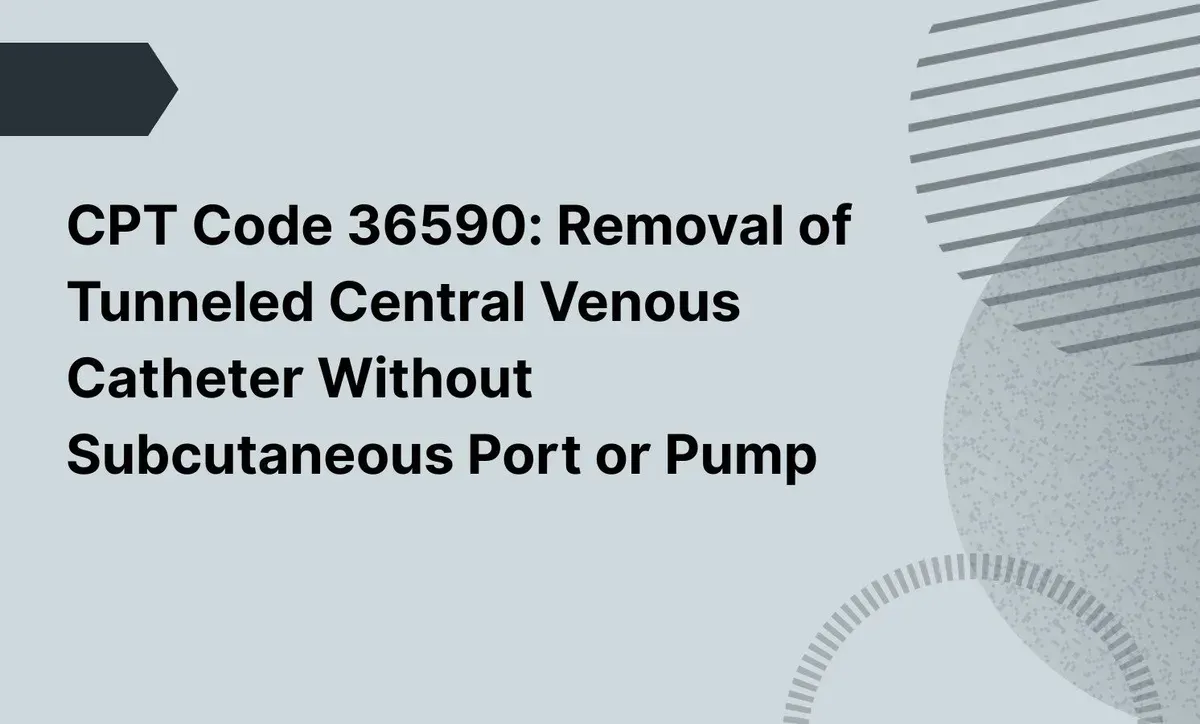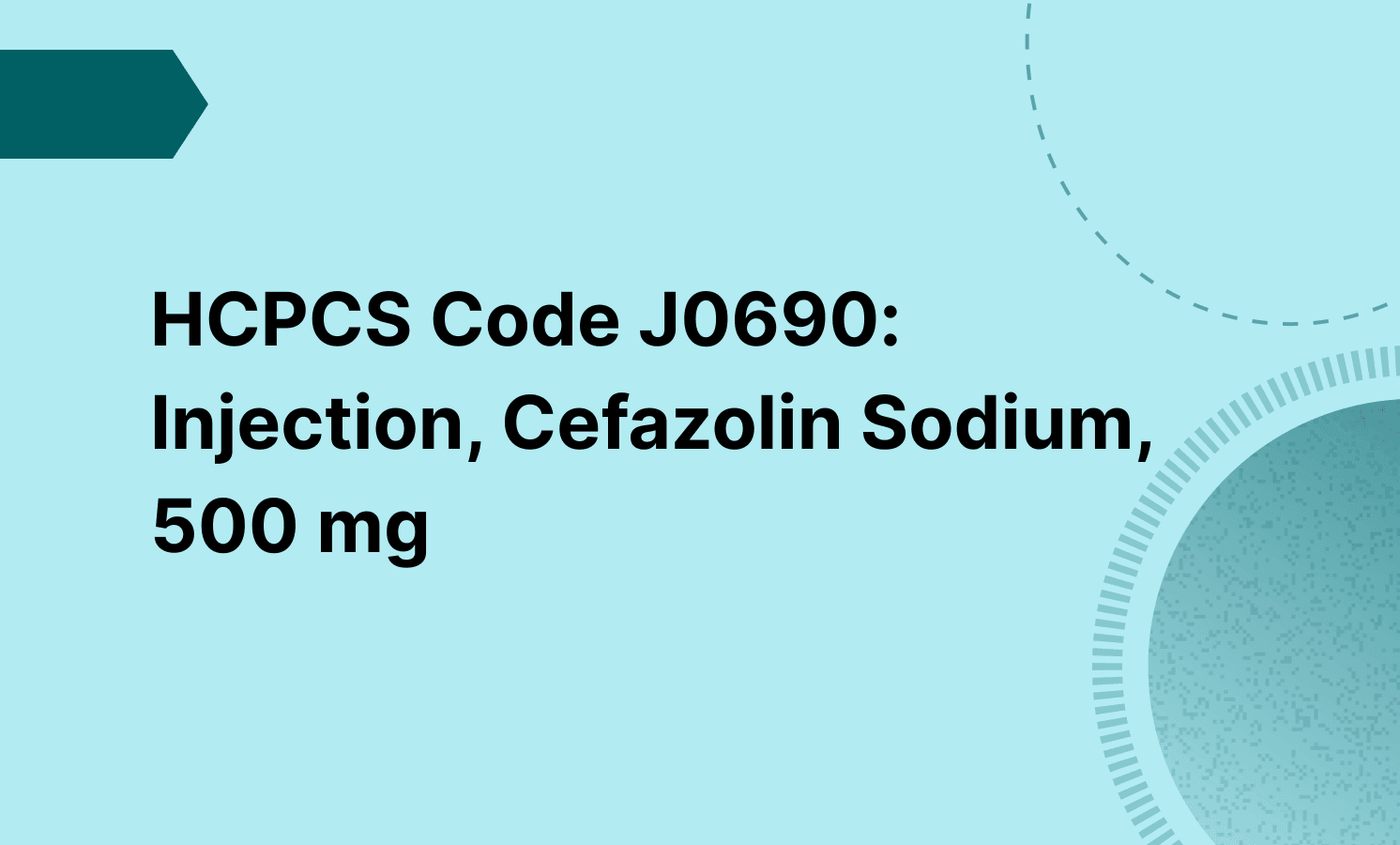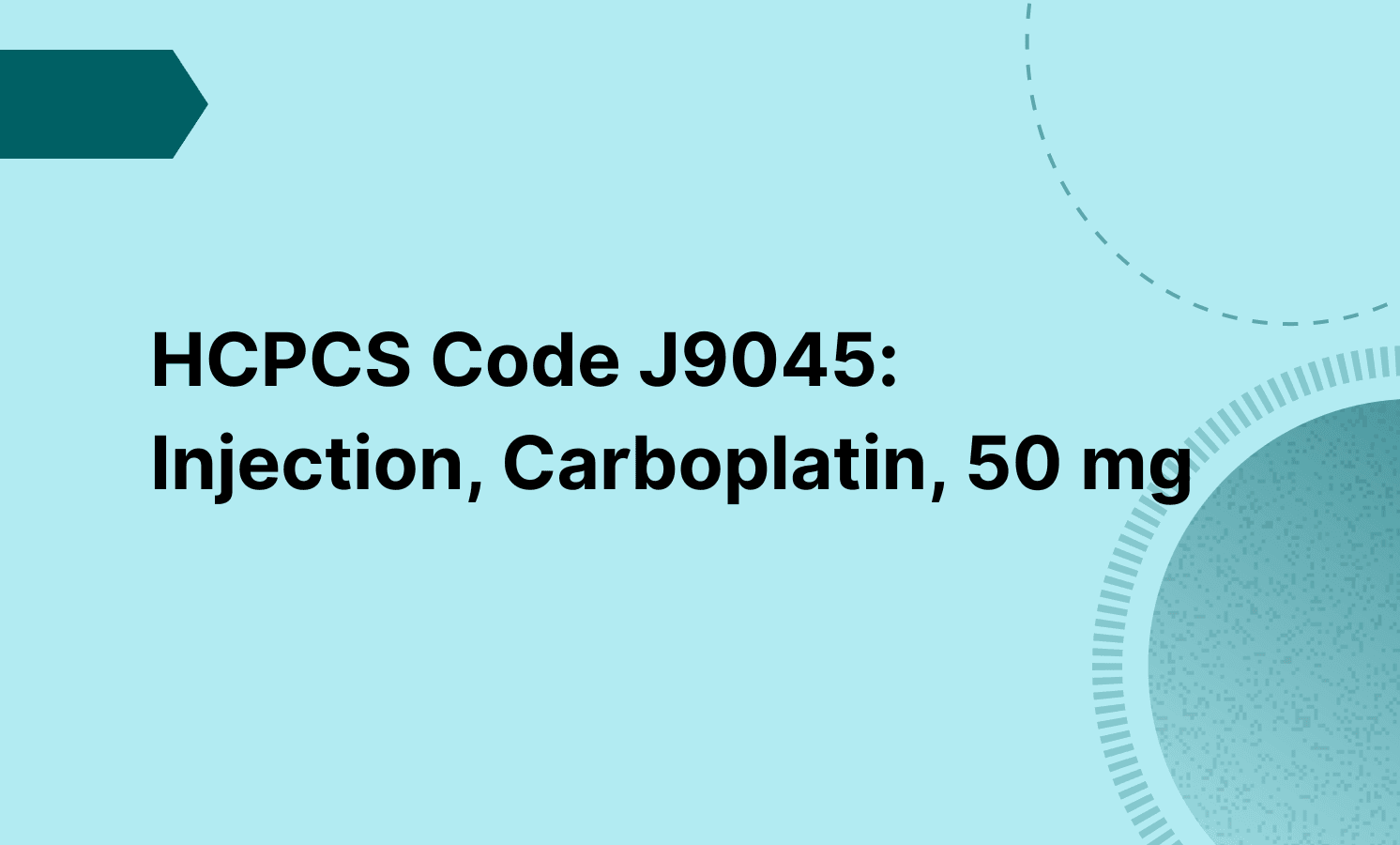No. This code is not appropriate for PICC lines. For peripherally inserted central catheters (PICC), refer to the 36584–36585 series, which are specific to peripheral insertion and removal of access devices without subcutaneous ports.

CPT Code 36590: Removal of Tunneled Central Venous Catheter Without Subcutaneous Port or Pump
Learn about CPT Code 36590, used for removing a central venous device without a subcutaneous port.
Use Code
Frequently asked questions
Yes. These are considered bundled services within the removal of a tunneled central venous access device and do not require separate reporting unless unrelated to the catheter procedure.
No. Imaging such as fluoroscopy is not bundled in this code. If medically necessary and properly documented, it may be billed separately as a distinct procedure or service, especially when evaluating the tunneled central venous access route or confirming separate venous access.
EHR and practice management software
Get started for free
*No credit card required
Free
$0/usd
Unlimited clients
Telehealth
1GB of storage
Client portal text
Automated billing and online payments






